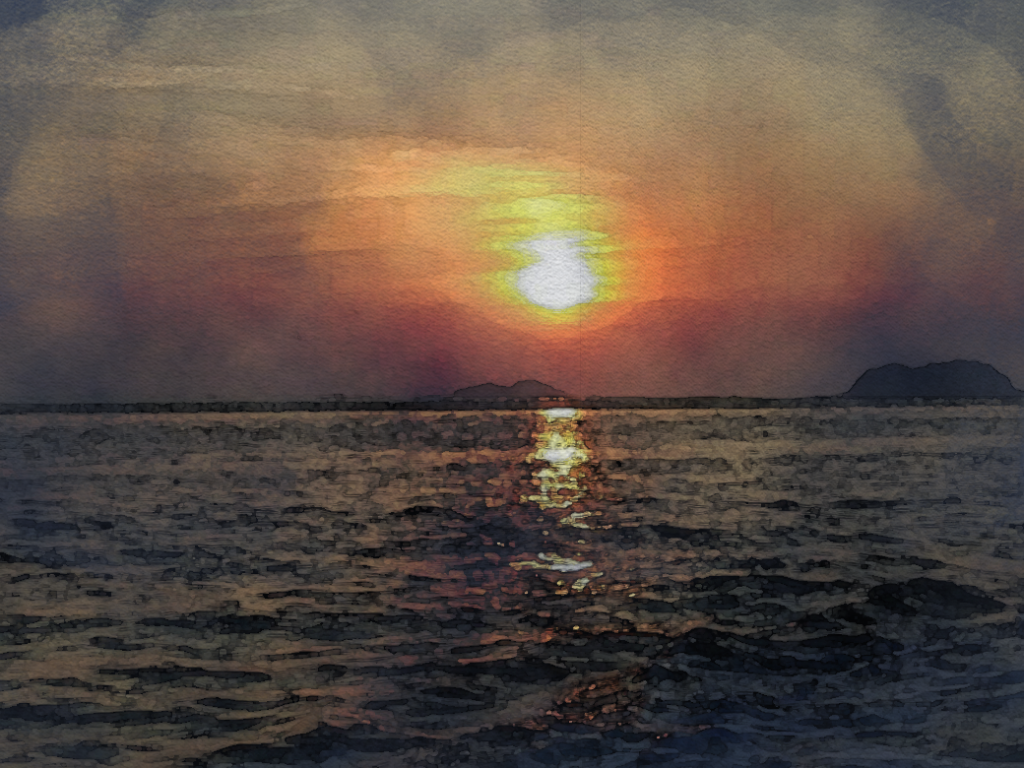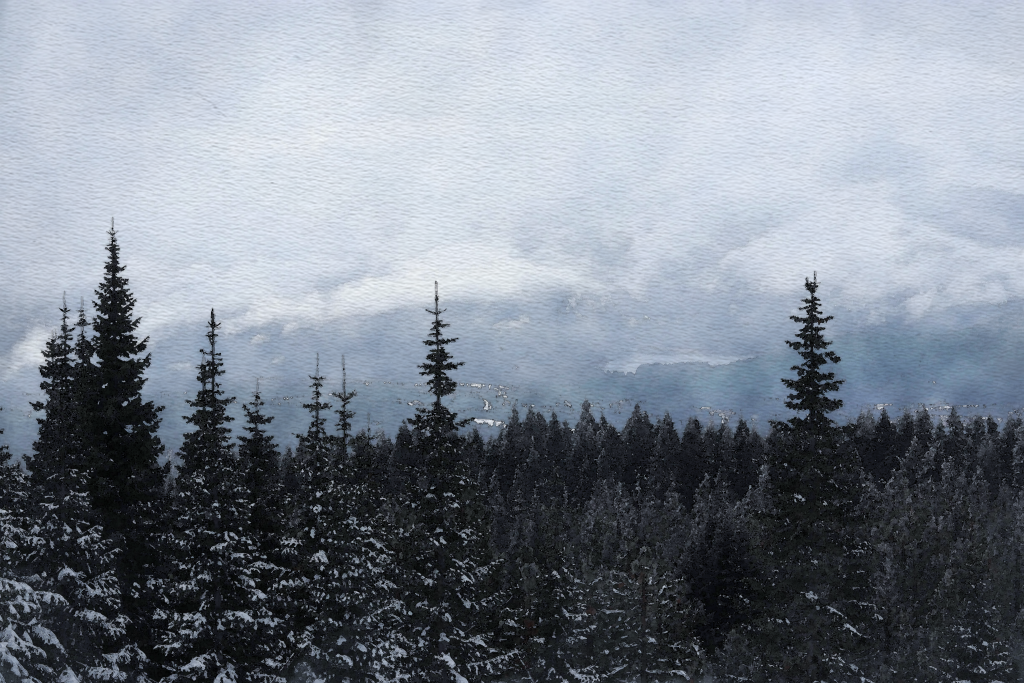Mandala
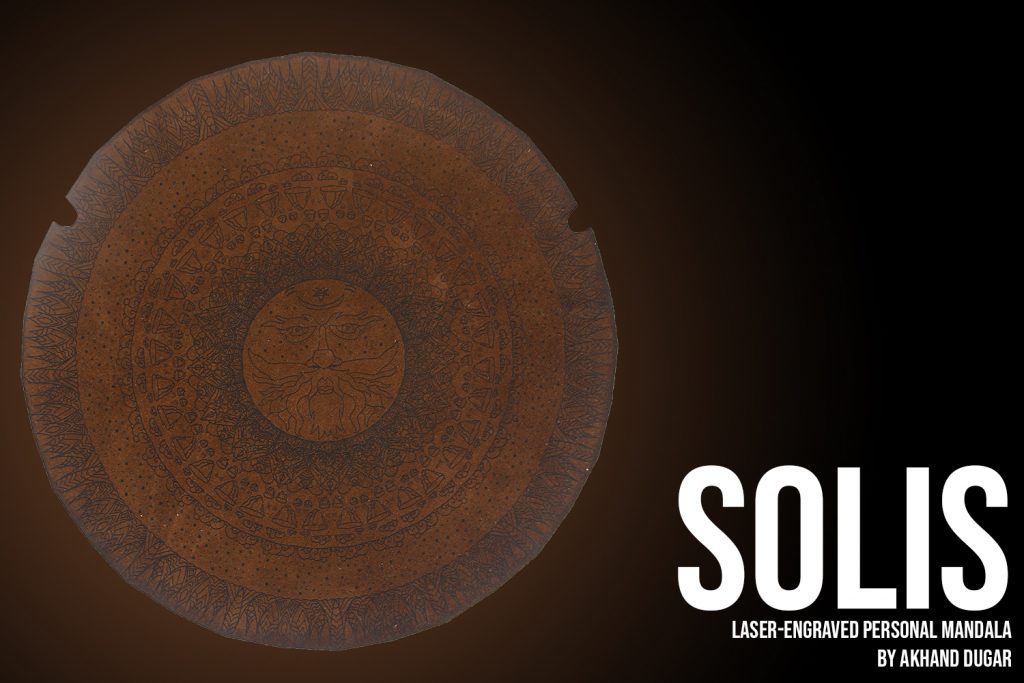

The largest project we worked on in Digital Media was our Mandala. It was meant to be a relaxing, meditative experience–and though I was skeptical at first, when I was up at 1 a.m. staring into my computer screen as more and more little lines squiggles and lines appeared on it, I realized that I had fallen in love with the process. Although I was alright at Illustrator, it was never my strong suit, but with this project, I gained a deeper understanding of how to use layers and a variety of tools to my advantage. I’m super proud of the finished product!
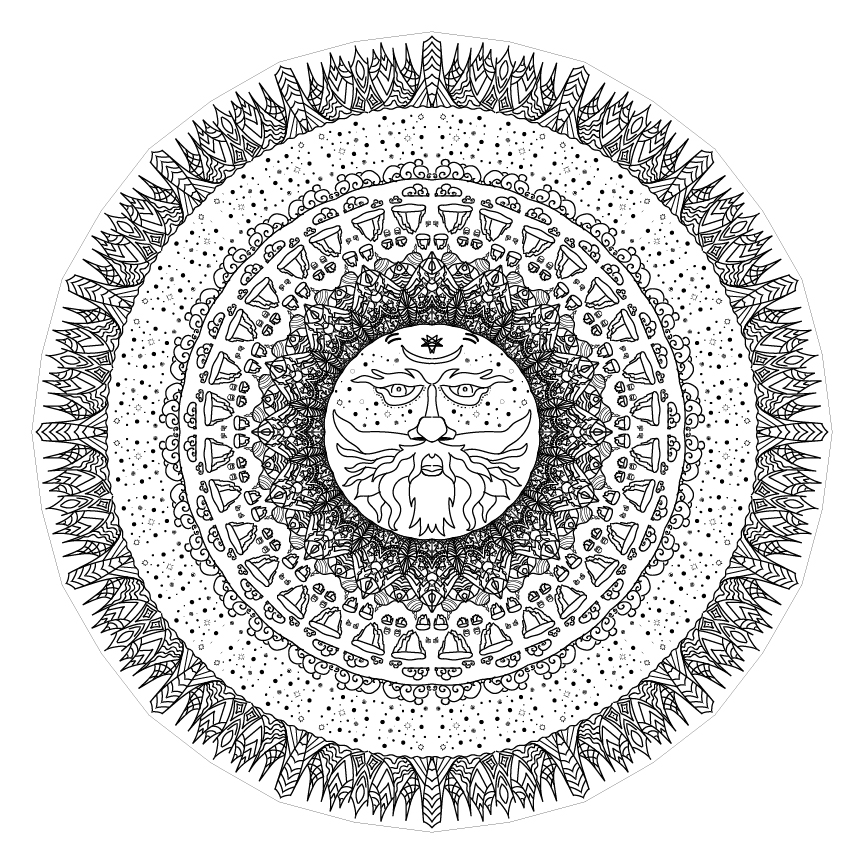
When I started the personal mandala project, I really wasn’t sure where to start. I like making art, but drawing has never really been my strong suit. The first couple shots I took at the project were unfruitful; I’d spend about 15 minutes scribbling and watching the lines appear around the screen before clearing everything, then doing it all over again the next day. But then the day before it was due, I knew that I had to get it over with. I sat down and reluctantly started drawing. I started with one curved pen stroke and realized that the resulting shapes looked like mountains. And then, my idea hit me.
Perspective Opinion Video
Our second project this unit was to create a video about a strong perspective or opinion we hold. My first schooling experience was at a school for the deaf and hard-of-hearing as a reverse-mainstream student. I am also very passionate about diversity in literature–I wrote a children’s book featuring a deaf, Indian main character and gave a TEDx talk on the subject. Explaining why I believe diversity in literature is important was an obvious choice for this video essay. We used After Effects to edit images, text, and audio produce this video. I’m very proud of how far I’ve come with the program since I first used it last year; I’m glad to say that I now feel comfortable using it. You can read the transcript of my video below.
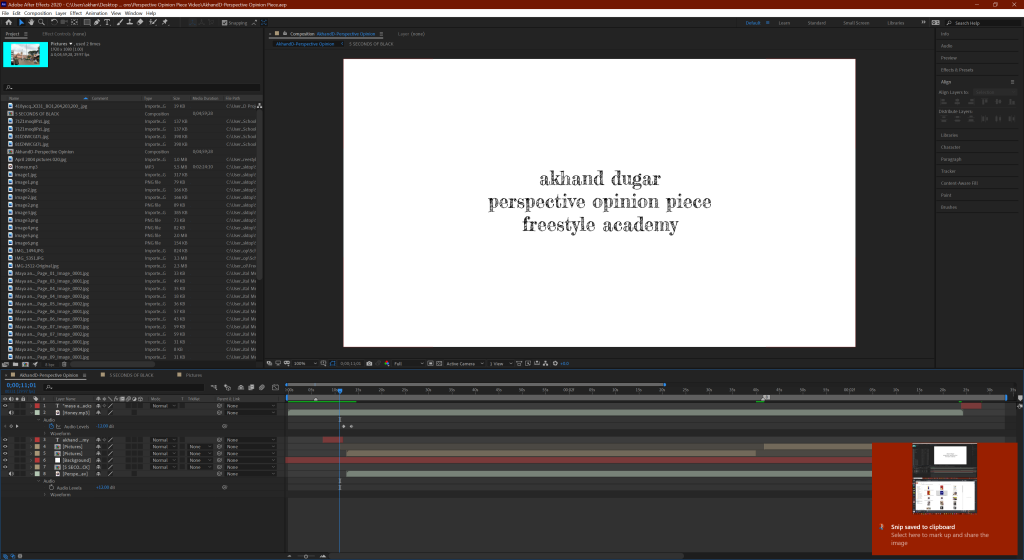
My grandparents’ house in Bangalore is full of bookshelves. Old British authors line the lower levels, but the few Indian authors are forgotten on the dusty tops, too high for a young reader to reach. Growing up, I stuck to the books I could get to. Because I was only reading one kind of book—the kind set in England or the US—my perception of the outside world, and of literature, was very Eurocentric and Americentric. For example, in the fifth grade, I participated in a school-wide writing competition. My story was set in the English countryside and was about British children, things with which I had no personal experience, other than my one trip to the UK as a three year old. As a result, my story was filled with crude attempts to copy British culture and language, even slang. I recall using the phrase “cheerio” at least a dozen times in the three page story. But one day, my grandmother handed me a copy of Jhumpa Lahiri’s The Namesake. It was a book filled with characters and cultural references I could identify with. I was hooked. I went on to read more books about the Indian and immigrant experiences, like The Joy Luck Club, Americanah, and The Spirit Catches You and You Fall Down. I was fortunate enough to discover them, realizing that not only one type of person is an author, or that not only one type of person deserves to have their story told, a realization that I’ve come to through my own work. I remembered The Namesake when reconnecting with Arya, a former classmate from the Weingarten Children’s Center, a school for deaf and hard-of-hearing children where I was a reverse-mainstream student. In speaking with Arya, I was struck by how little her current classmates knew about her deafness. The Namesake made me feel recognized; I wanted to do the same for Arya and other kids like her. In tenth grade, I wrote a children’s book called about a deaf Indian girl, Maya, from the perspective of Sid, a boy deeply curious about Maya’s cochlear implants. I wanted to reflect the experiences of children who were hearing and deaf to provide my readers with both mirrors and lenses into a different world. After self-publishing the book, I read it at local elementary schools with Arya. She told me about how touching it was for her to see a deaf Indian girl featured as a main character. Over the past two years, I’ve continuously heard from families whose children identified with Maya. Realizing that not only one kind of person can be an author was so validating, and helped me become a better creator in my own right. Having mirrors in media, like books, are important, and I truly hope that we can see more diverse literature in the hands of kids.
Photoshop Art
Another program that we got more familiar with this year was Photoshop. We completed several projects that helped us get familiar with Photoshop painting, specifically in the pastel and watercolor styles. Before this project, I didn’t know how powerful Photoshop was–I definitely have a newfound appreciation for the program now!
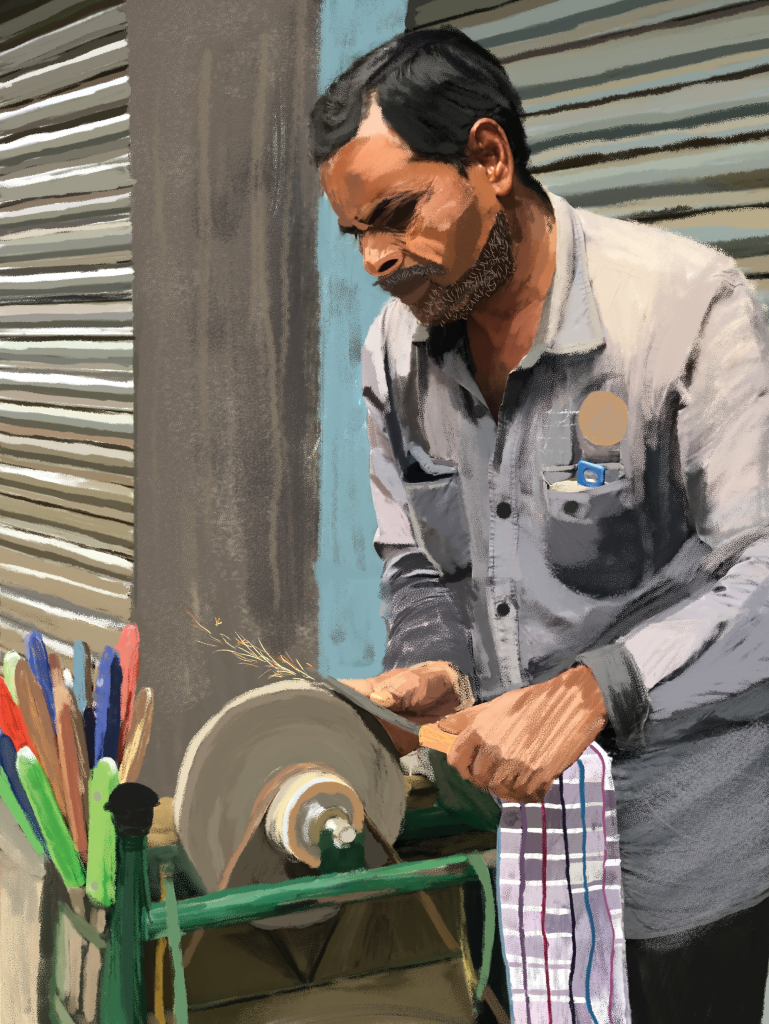
Since the beginning of Digital Media, I’ve struggled with two things–the pen tool and, of course, the brush tool. I’ve never even been that great at drawing on paper, let alone on a computer. That’s why completing this project felt like a personal win–with completing it, I’ve come closer to conquering the brush tool!
I wasn’t comfortable enough in my own skills to paint a standalone painting. That’s why I decided to extend our first assignment in the Photoshop painting section–“tracing” an image. I chose this striking image of a knife sharpener because of his brooding expression, the colorful knives and towel, and the bright sparks coming off of the sharpening wheel. I snapped this picture in an open-air market in India that I went to when I visited my sophomore summer.
This assignment made me appreciate digital artists much more. I never realized the amount of work that went into creating such pieces. I will definitely be exploring digital pastel painting more in the future!
